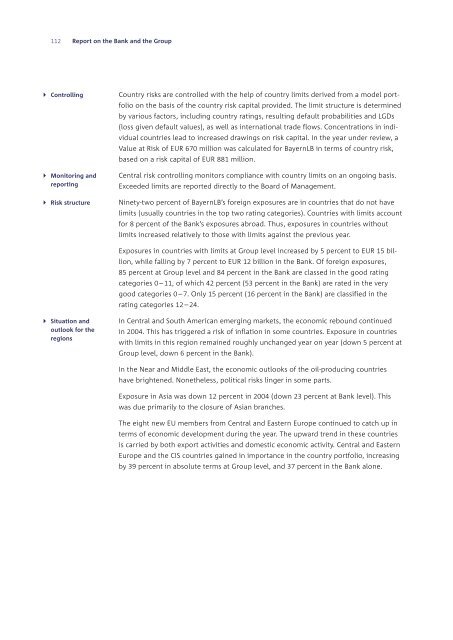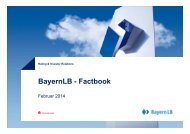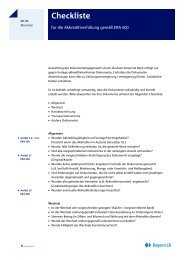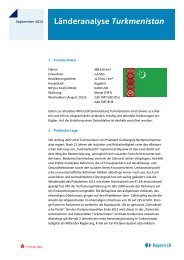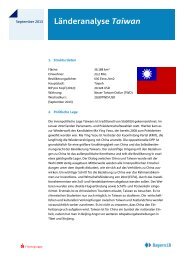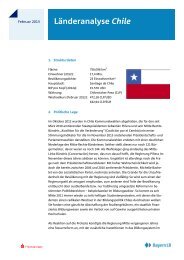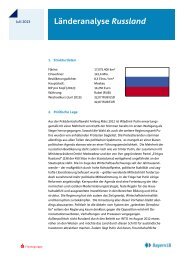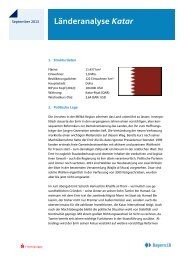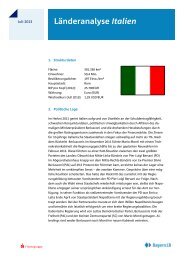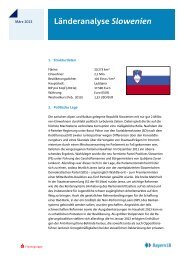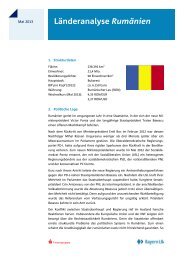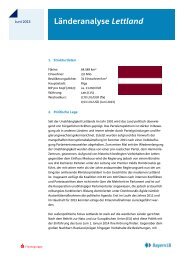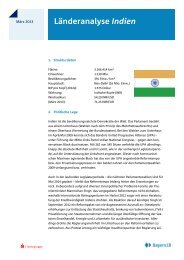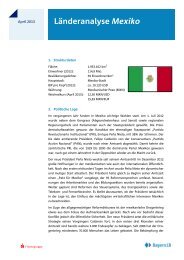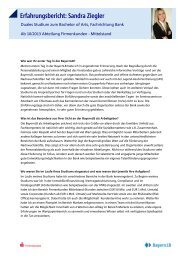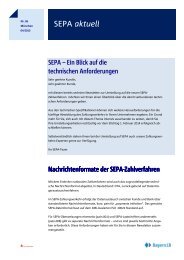A4 für Copyshop GB.indd - Bayerische Landesbank
A4 für Copyshop GB.indd - Bayerische Landesbank
A4 für Copyshop GB.indd - Bayerische Landesbank
You also want an ePaper? Increase the reach of your titles
YUMPU automatically turns print PDFs into web optimized ePapers that Google loves.
112 Report on the Bank and the Group<br />
} Controlling<br />
} Monitoring and<br />
reporting<br />
} Risk structure<br />
} Situation and<br />
outlook for the<br />
regions<br />
Country risks are controlled with the help of country limits derived from a model port-<br />
folio on the basis of the country risk capital provided. The limit structure is determined<br />
by various factors, including country ratings, resulting default probabilities and LGDs<br />
(loss given default values), as well as international trade flows. Concentrations in indi-<br />
vidual countries lead to increased drawings on risk capital. In the year under review, a<br />
Value at Risk of EUR 670 million was calculated for BayernLB in terms of country risk,<br />
based on a risk capital of EUR 881 million.<br />
Central risk controlling monitors compliance with country limits on an ongoing basis.<br />
Exceeded limits are reported directly to the Board of Management.<br />
Ninety-two percent of BayernLB’s foreign exposures are in countries that do not have<br />
limits (usually countries in the top two rating categories). Countries with limits account<br />
for 8 percent of the Bank’s exposures abroad. Thus, exposures in countries without<br />
limits increased relatively to those with limits against the previous year.<br />
Exposures in countries with limits at Group level increased by 5 percent to EUR 15 bil-<br />
lion, while falling by 7 percent to EUR 12 billion in the Bank. Of foreign exposures,<br />
85 percent at Group level and 84 percent in the Bank are classed in the good rating<br />
categories 0 – 11, of which 42 percent (53 percent in the Bank) are rated in the very<br />
good categories 0 – 7. Only 15 percent (16 percent in the Bank) are classified in the<br />
rating categories 12 – 24.<br />
In Central and South American emerging markets, the economic rebound continued<br />
in 2004. This has triggered a risk of inflation in some countries. Exposure in countries<br />
with limits in this region remained roughly unchanged year on year (down 5 percent at<br />
Group level, down 6 percent in the Bank).<br />
In the Near and Middle East, the economic outlooks of the oil-producing countries<br />
have brightened. Nonetheless, political risks linger in some parts.<br />
Exposure in Asia was down 12 percent in 2004 (down 23 percent at Bank level). This<br />
was due primarily to the closure of Asian branches.<br />
The eight new EU members from Central and Eastern Europe continued to catch up in<br />
terms of economic development during the year. The upward trend in these countries<br />
is carried by both export activities and domestic economic activity. Central and Eastern<br />
Europe and the CIS countries gained in importance in the country portfolio, increasing<br />
by 39 percent in absolute terms at Group level, and 37 percent in the Bank alone.


